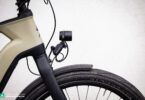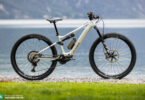The Bosch Performance Line CX is undoubtedly one of the most popular ebike motors out there and therefore the top choice for many eMTB manufacturers. After testing it with over 50 eMTB models in the past, in our big 2023 motor comparison test, we decided to test the eMTB stalwart against the latest and greatest ebike motors currently on the market, putting it through the wringer both on the trail and in the lab!
This review forms part of our big ebike motor comparison test. Here you’ll find an overview of all 13 motors in review, along with lots of exciting background information, and helpful buying advice for your next purchase!

The Bosch Performance Line CX is a true all-rounder and has long established itself as one of the top dogs amongst eMTB motors. Originally designed as a motor for sporty off-road riding, has also become a popular choice amongst some of the more radical eMTB concepts, off-road step-through ebikes, trekking ebikes, urban commuting machines and some of the more powerful gravel ebikes. In our big 2023 e-mountainbike group test alone, one in three competitors relied on a Bosch drive system, with a total of seven bikes employing the Performance Line CX motor. In our yearly reader surveys with over 12,000 participants, the German manufacturer has been voted as the best motor manufacturer, year after year. Bosch’s overwhelming success is down not only to the high manufacturing quality of their products, but also to their extensive experience from their pioneering work in the ebike segment over the years. After all, the Bosch Performance Line CX motor has been around since 2015, being continually redeveloped and improved over the subsequent years. In 2021, Bosch introduced the Smart System, providing the drive system with a smarter infrastructure and a solid basis for new features and further developments. While the core motor and transmission components remained pretty much unchanged (except for minor hardware tweaks) the peripheral ecosystem, including the remotes, displays and even the wiring harness, was redeveloped from the ground up. Unfortunately, the Bosch Smart System upgrade is not backwards compatible with previous variants.
The Bosch Performance Line CX is facing more and more competitors each day, even within Bosch’s factory. One of them is the Performance Line CX Race model, which was introduced in 2022 as the most powerful drive system in Bosch’s line-up. There’s also a smaller, significantly lighter competitor, the Performance Line SX, which was unveiled earlier this year and sits right below the Performance CX in Bosch’s portfolio, delivering significantly less torque (55 instead of 85 Nm) but a similar peak power as the CX.
What used to be Bosch’s Achilles’ heel is now their strength: app connectivity, customizability, and a modular ecosystem with its countless options for batteries, displays and remotes, which are both being constantly expanded. True to the “what goes around comes around” motto, Bosch favour quality and efficiency over competitive innovation. As a result, hardly any other motor manufacturer places as much importance on a well-functioning, global service network as Bosch – and they invested accordingly!
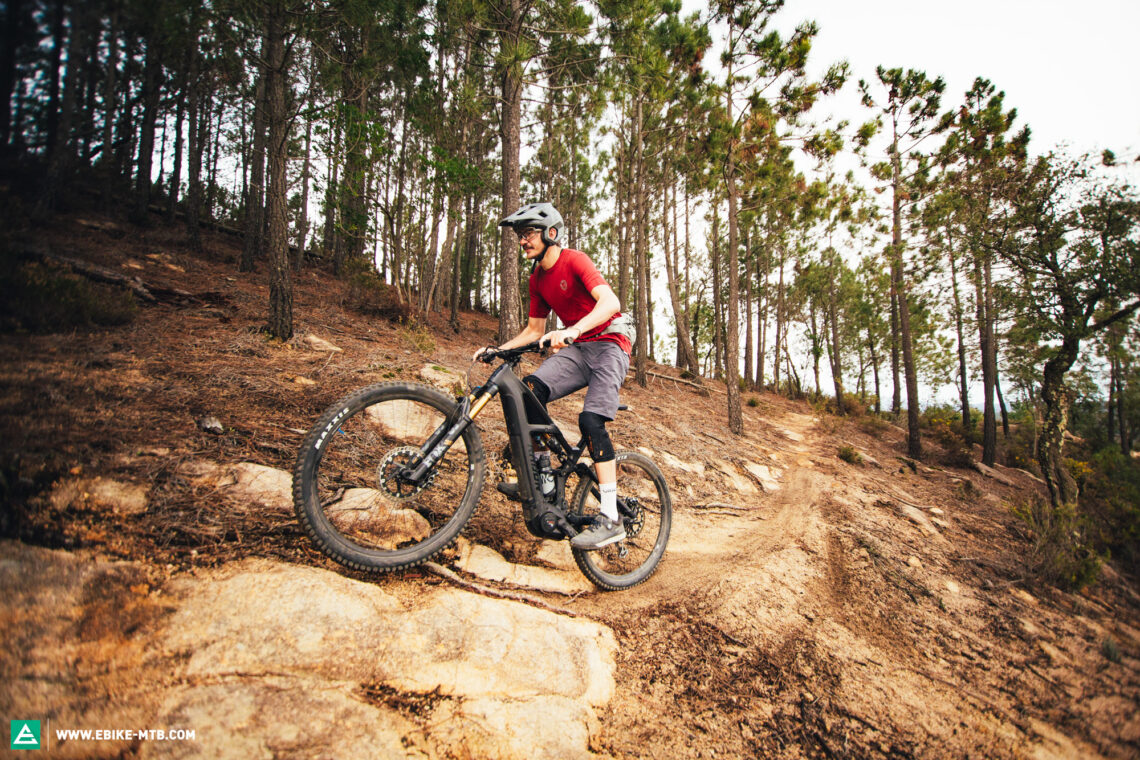
The Bosch Performance Line CX in detail: weight, peak output and battery energy density.
First things first! While this test is obviously about the motor, you should remember that any drive system is only as good as the eMTB it’s part of. When it comes to the motor system, Bosch have a lot to offer. Tipping the scales at 2.9 kg, the Performance Line CX delivers up to 85 Nm of torque with 600 watts peak power. We also tested the motor in the lab at the renowned Velotech institute, where we found out the following: in Turbo mode, the rider only has to produce between 170 and 200 Watts under their own steam (depending on cadence) for the motor to reach its 600 Watt peak power. However, if you pedal harder, the motor doesn’t produce any more power above this point. Coincidentally, this corresponds roughly to the 340 % maximum pedal assistance stated by Bosch. In purely mathematical terms, when producing 176 watts with your legs, the motor multiplies your effort by 3.4 times, which adds up to a total of 600 watts.
The Bosch Smart System ecosystem includes a wide range of batteries, displays and remotes that can be freely configured. However, the Bosch system can’t be complemented with third-party solutions, and bike manufacturers are required to use exclusively original Bosch components. The most popular batteries for the Performance Line CX motor are the PowerTube 625 and PowerTube 750, which have 625 Wh and 750 Wh capacity, respectively. At 4.38 kg, the latter is rather heavy but has a specific energy of just 171 Wh/kg, which translates into a rather low energy density. Other batteries with a comparable capacity can reach over 200 Wh/kg, ensuring a better weight to battery capacity ratio. When embarking on long backcountry expeditions, you can expand the battery with Bosch’s optional 250 Wh PowerMore 250 range extender.

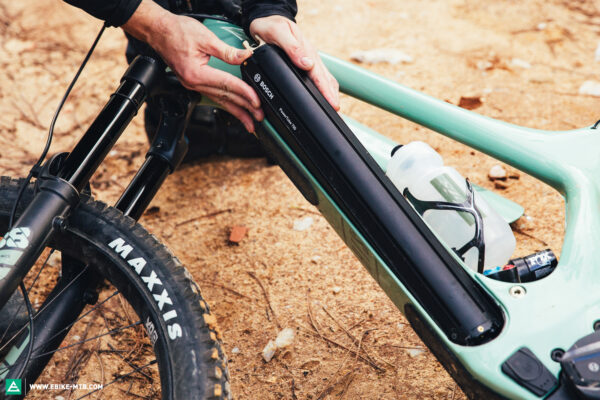
Only a few of Bosch’s displays and remotes are suitable for full-on trail riding. For downhill-oriented eMTBs, the top tube integrated Bosch System Controller and bar-mounted Mini Remote are the most sensible choice. Although the wireless remote and display only show the battery charge status and current support mode via LEDs, they’re intuitive to use and very discreet, ensuring a clean look. Alternatively, there’s the rather clunky Bosch LED Remote, which serves as the motor’s control unit and combines the functions of the Mini Remote and system controller, meaning that you could also use the bike with just the LED Remote. However, the latter can’t keep up with similar concepts from other brands, like the slim Shimano SW-EN600L, for example, neither in terms of looks nor in terms of ergonomics. If you need more data while riding, you should go for the bigger Bosch Kiox 300 or Kiox 500 displays. With the activated navigation function, they have a basic breadcrumb trail which provides turn-by-turn directions. That said, the standard Kiox mount positions the display right in front of the stem, where it’s exposed to impacts in the event of a crash – luckily aftermarket mounts are available to remedy this.
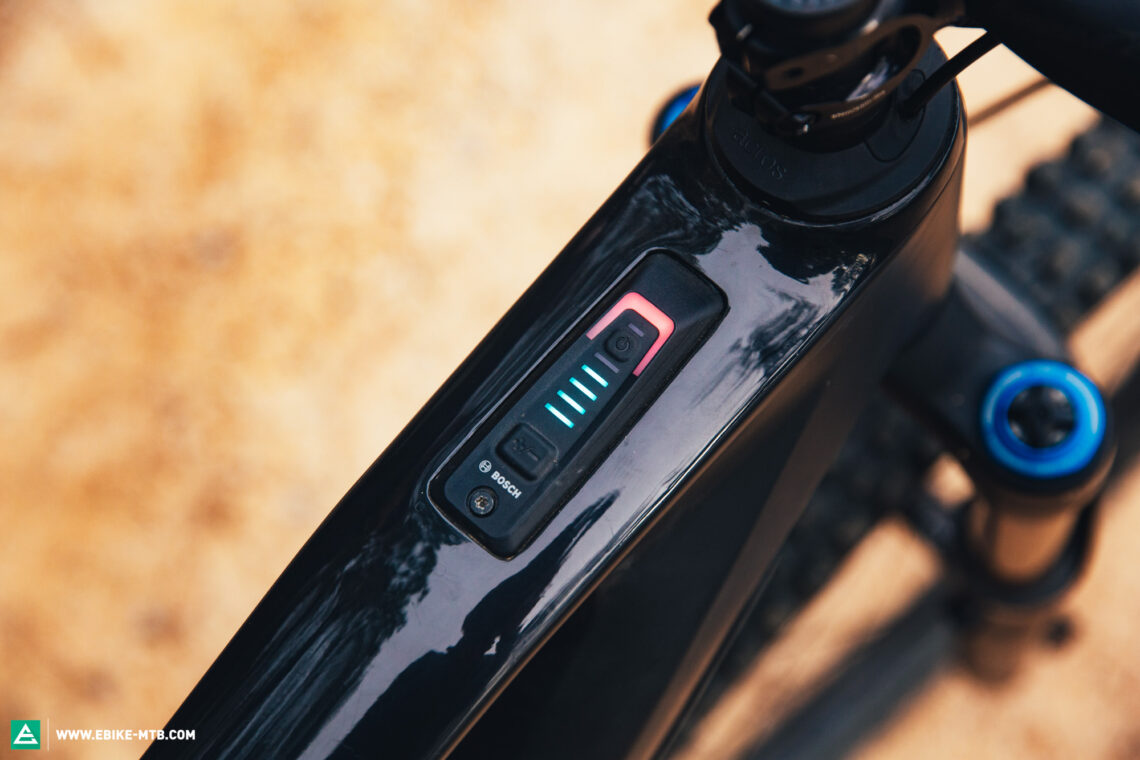
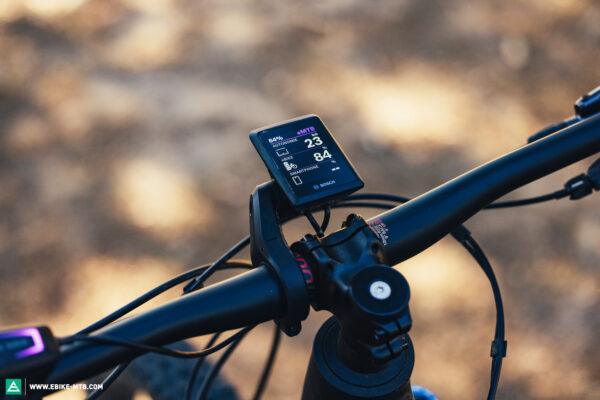
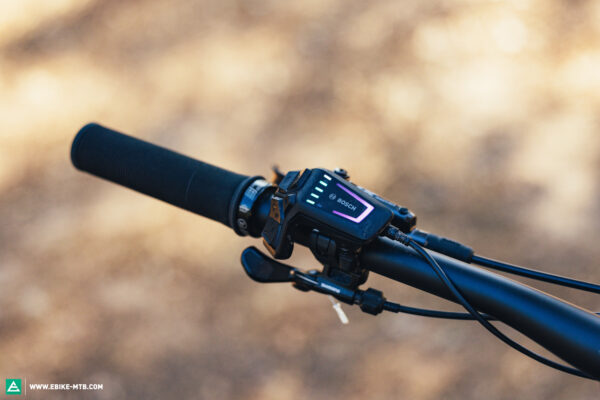
The motor system doesn’t include just batteries, displays and remotes but also the eBike Flow app, which allows you to fine tune the motor settings via an intuitive user interface. For example, you can adjust the individual support modes; tweaking their dynamic behaviour, maximum torque, as well as the strength of the support and the speed (within the framework of legal regulations). However, in order to preserve the distinctive character of each support level, they can only be fine-tuned within certain parameters.
To make things easier for beginners, the system explains the changes you’ve made and the effect they have on the riding experience – awesome! While other motor manufacturers outsource the navigation function to third-party apps, the Bosch eBike Flow app includes it in the system, allowing you to plan your own route, the remaining battery range depending on the support modes is displayed. Few competitors offer such a comprehensive navigation function. With the eBike Alarm, Bosch offer an anti-theft system that should protect your bike from thieves. However, this only works in combination with the optional Connect module and requires you to subscribe to Bosch’s premium Flow+ plan, which costs € 4.99 per month or € 39.99 per year, though the first 12 months are for free. The Bosch Performance Line CX is also compatible with the Bosch ABS system, which takes e-bike safety to a whole new level.


The Bosch Performance Line CX in review – Smooth operator
Bosch ebikes feature four support modes, which can be specified by the manufacturer. Most eMTBs tend to come with Eco, Tour+, eMTB and the exciting-sounding Turbo, all of which have very different characters. As far as dynamic riding modes go, Bosch are at the cutting edge: Tour+ and eMTB adapt the assistance to the respective riding situation, preventing you from having to constantly switch between modes on long rides. As the weaker one of the two, Tour+ is the optimal choice for saving battery range, and can also be used by lighter riders as a less turbulent alternative to the more powerful eMTB mode. Depending on the riding situation and the pressure you exert on the pedals, it provides between 140% and 340% assistance. The software is spot on most of the time, regulating the assistance smoothly and progressively. Combined with the right riding technique, it prevents the rear tire from spinning out of control, even when powering over wet roots and slippery rocks. On technical climbs, the sustained response of the eMTB mode allows you to clear obstacles without having to pedal – Bosch call this Extended Boost! In the standard setting, Turbo mode is very powerful – albeit a bit abrupt from a standstill – providing an authentic shuttle feeling on long, monotonous climbs and thus allowing you to shoot to the trailhead at 25 km/h without breaking a sweat. The powerful Turbo mode, however, doesn’t feel as natural to ride – it’s Turbo mode, baby! Customisation freaks can fine tune the character and response of all the support modes – including the progressive ones – using the eBike Flow app.

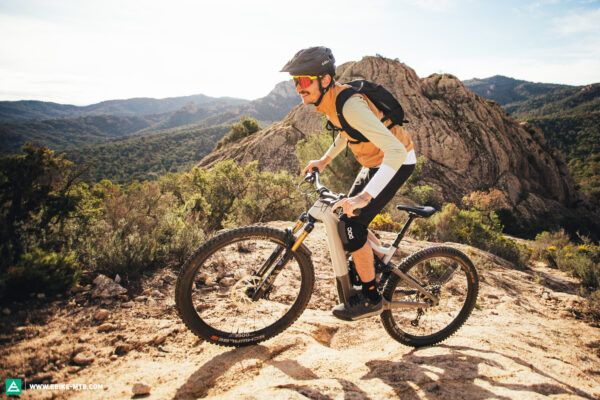
The Bosch Performance Line CX impresses above all with its outstanding riding behaviour. With its smooth character and wide cadence range, it provides plenty of assistance and good modulation uphill – our lab tests clearly proved this! In the strongest support mode, the motor has linear power delivery and maintains it over a wide cadence range. Furthermore, the Bosch Performance Line CX reaches its peak power at a low cadence and with relatively little leg power, allowing even unfit riders to reach the motor’s peak power without too much effort, while pedalling seated. The Bosch easily outperforms the Shimano EP801 motor, which also delivers 85 Nm torque. On steep ramps, it keeps up even with the more powerful Brose Drive S Mag, but doesn’t feel quite as natural because it reaches its peak power relatively soon, while the Brose increases its power a smidge more smoothly across the cadence band.
Our conclusions about the Bosch Performance Line CX
While the Bosch Performance Line CX isn’t the strongest, lightest nor quietest motor out there, it’s still an absolute belter, proving an excellent all-rounder for all sorts of riding applications. That said, the CX is getting more and more in-house competition, including the even more powerful Performance Line CX race motor and significantly lighter SX motor, which delivers a similar peak power. Bosch is still the benchmark, both in terms of riding performance and proprietary modularity – and their global service network is second to none.
Tops
- First-class allrounder
- eMTB mode always gets the job done
- Top connectivity
- Fantastic service network
Flops
- Heavy batteries with low energy density
- Turbo modus doesn’t feel as natural
For more information, visit bosch-ebike.com
The test field
For an overview of our big ebike motor comparison test click here
All ebike motors in test: Bosch Performance Line CX | Bosch Performance Line CX Race (Click for review) | Bosch Performance Line SX (Click for review) | Brose Drive S Mag (Click for review) | FAZUA Ride 60 (Click for review) | GIANT SyncDrive Pro2 (Click for review) | Panasonic GX Ultimate (Click for review) | Pinion MGU E1.12 (Click for review) | Shimano EP801 (Click for review) | Specialized SL 1.2 (Click for review) | Specialized 2.2 (Click for review) | TQ HPR 50 | Yamaha PW-X3 (Click for review)
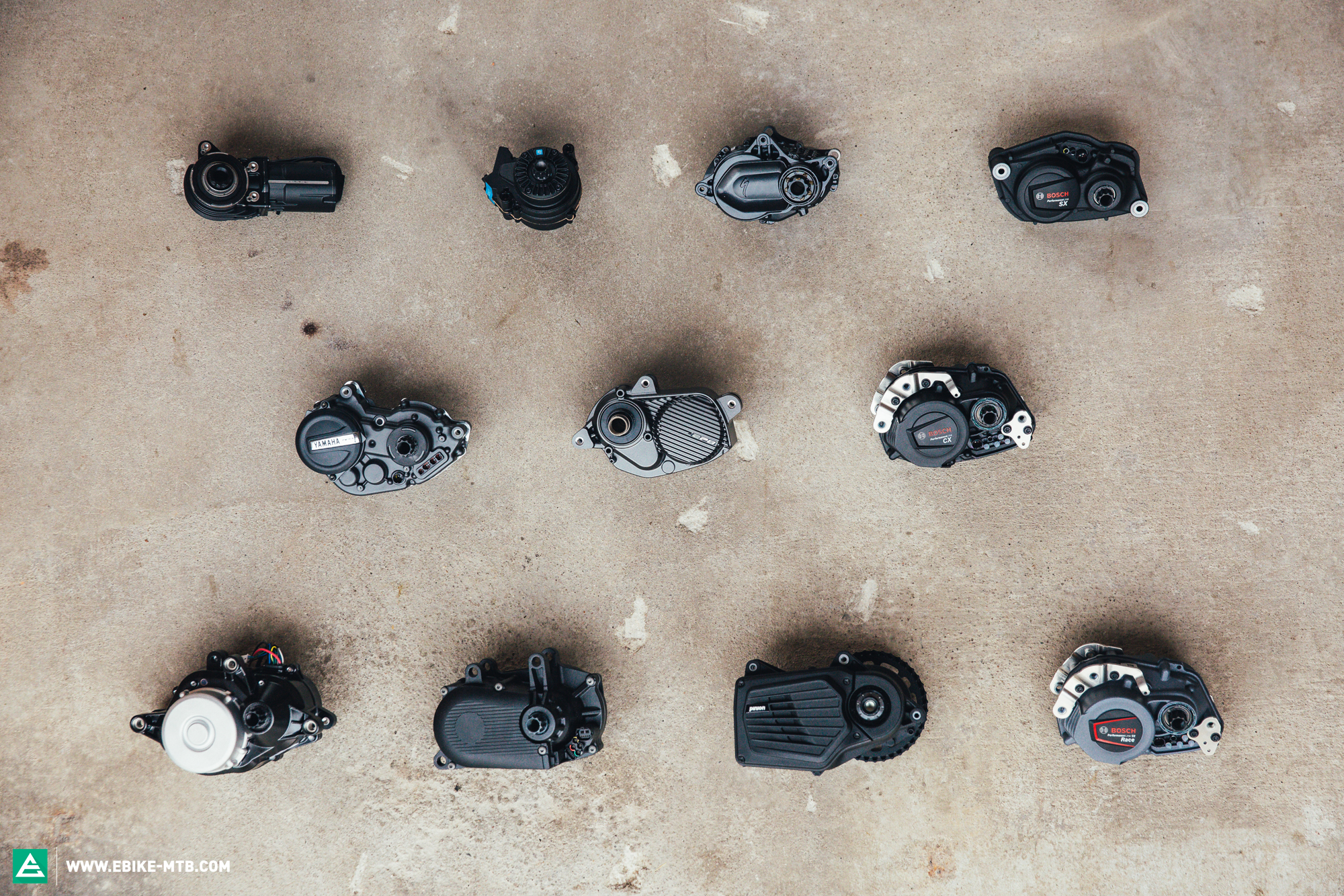
Did you enjoy this article? If so, we would be stoked if you decide to support us with a monthly contribution. By becoming a supporter of E-MOUNTAINBIKE, you will help secure a sustainable future for high-quality cycling journalism. Click here to learn more.
Words: Mike Hunger Photos: Various




